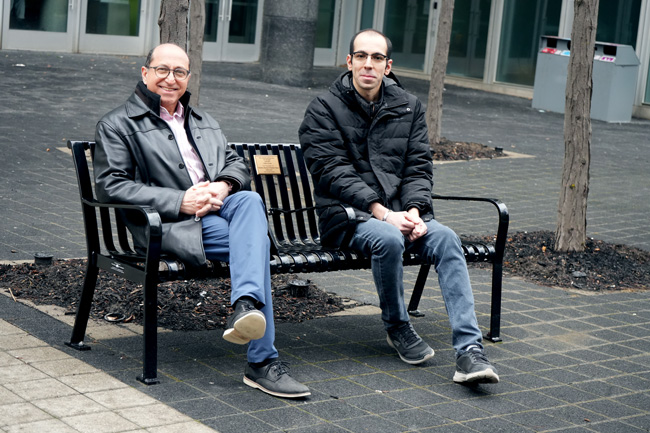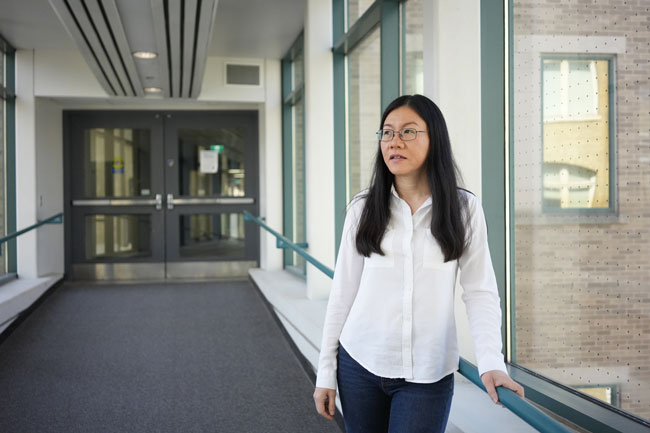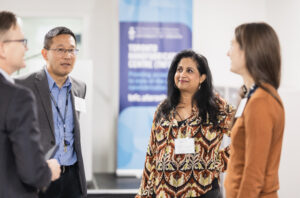
MARCH 30, 2023 • By Matthew Tierney
A formula developed by ECE professor Shahrokh Valaee and PhD candidate Mohammad Javad-Kalbasi cuts in half the time it takes to upgrade legacy telecommunication networks.
The two ECE researchers made use of a quantum-inspired technology called the Digital Annealer (DA) developed in partnership between Fujitsu Laboratories and University of Toronto. The number-crunching power of the DA was used to find the optimal path for router switch updates, which must be coordinated by technicians in different cities.
“Basically, this optimization can reduce the number of kilometres they have to travel,” says Valaee. “Compared to commercial solutions, it can be upwards of a 70% improvement in both the time and the cost.”
Fujitsu, through its network business, will soon roll out the service to network operator customers in North America.
“The phone you're using today is very different from your phone 10 or 20 years ago,” says Valaee, “and network systems need to be updated to handle such enhancements. But replacing router switches is a very costly proposition. It is not a switch that you can just turn on and off.”
For example, to update a switch in a functioning link between Montreal and Toronto, technicians in one city must communicate with their counterparts in the other to facilitate what’s called a ‘hot swap,’ where the switches are precisely timed to flip from the old system to the new to avoid any network interruption.
This procedure is done manually, and needs to be carried out multiple times for switches that have multiple connections. In a regional system that spans 50 to 60 cities, it can take months or even years — depending on the circuit size, number and complexity — to determine which technician should be where, as well as which switches should be flipped, and when.
The challenge of migrating circuits on this scale constitutes a combinatorial optimization problem, a family of mathematical challenges that includes the travelling salesmen problem.
The number of possible solutions to such problems is too large to search by brute computational force — Javad-Kalbasi says that it would take too long on a conventional computer. This is where the Digital Annealer comes in.
“The DA outperforms other solvers on the market by modelling in a digital format the interactions of spins in a quantum environment,” says Javad-Kalbasi.
“It’s these interactions that allow quantum computers such processing power. But while a quantum bit has a real interaction with six of its neighbours, the digital bit of the DA, because it’s virtual, can connect with any number without physical limitation. This can be even more useful.”
“We formulated the problem in a specific format called an Ising model that samples thousands of bits in a ‘random walk,’” says Valaee. “It’s almost like flipping a coin a thousand times at once, asking at each stage, ‘Is this a better path?’ and then moving on if the answer is ‘yes.’”
The result is an optimal circuit migration plan from which you can infer how many technicians are necessary, in what locations, and at what times.
“The research trajectory that Professor Valaee and Javad-Kalbasi has taken is exemplary,” says ECE Chair Professor Deepa Kundur. “They learned from industry the complexities of the problem, made novel use of a new quantum-inspired tool, and delivered in short order measurable improvements that make a real difference.”
“We couldn’t discover the problem just by sitting in our offices and thinking about,” says Valaee. “We needed an industry partner to present something they could not solve, and it inspired us. We have the brain power, we have smart students here, so let's tackle it.”
After this breakthrough with the DA, Valaee and his research team have their sights set on solving other challenges using the tool.
“We’re working on similar Ising-modelled problems in cyber security, in cellular networks, in vehicular communication for self-driving cars,” says Javad-Kalbasi. “It’s important to note, that when quantum computers become more feasible, the methodology will work on them too.”


